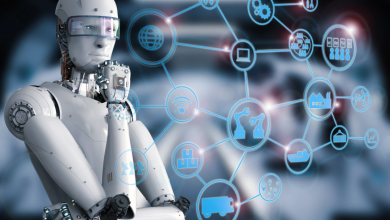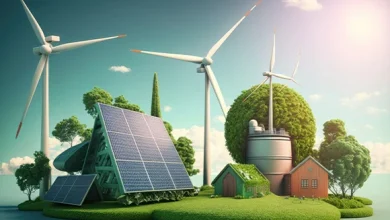Impact of Technology on Society and Environment
Technology has turned into a fundamental piece of human existence, deeply shaping society in significant and frequently complex ways. From cell phones and man-made reasoning to sustainable power and the web, mechanical headways have changed how we live, work, impart, and interface with our current circumstance. Nonetheless, these advancements accompany both positive and negative ramifications for society and the climate.
In this article, we will investigate the expansive effect of innovation on different parts of society, including correspondence, schooling, work, and medical services. We will likewise look at the natural results of mechanical development, tending to both the amazing open doors and difficulties it presents for maintainability.
1. Positive Effects of Technology on Society
Innovation has certainly achieved various advantages to society, working on the personal satisfaction in different ways. Here are a portion of the key regions where innovation has had a huge constructive outcome:
a) Correspondence and Network
One of the most noticeable and quick effects of innovation is the manner in which it has changed correspondence. The creation of the web, online entertainment stages, and cell phones has upset how individuals impart across distances. Today, texting, video calls, and interpersonal interaction permit individuals to remain associated with companions, family, and partners, paying little mind to geological obstructions. This network cultivates worldwide cooperation, works with social trade, and fortifies social bonds.
Past private correspondence, innovation has empowered the ascent of worldwide developments for civil rights and political change. Online entertainment stages like Twitter and Facebook play played urgent parts in preparing individuals for purposes, for example, environment activity, racial fairness, and vote based changes, exhibiting innovation’s capacity to engage social change.
b) Instruction and Learning
Instruction has been changed by innovative progressions, making learning more available, customized, and locking in. The web gives admittance to an abundance of data, empowering individuals to master new abilities, seek after internet based courses, and participate in independent training. Stages like Coursera, Khan Foundation, and edX offer courses from a-list establishments, democratizing admittance to instruction.
Moreover, innovation upgrades conventional homeroom advancing by integrating intelligent devices like instructive applications, computerized course books, and augmented reality reenactments. These devices make learning really captivating and custom fitted to individual learning styles, assisting understudies with accepting complex ideas all the more successfully.
c) Medical services and Medication
Mechanical developments have achieved weighty headways in medical services, prompting better conclusion, therapy, and patient consideration. The utilization of electronic wellbeing records (EHRs) takes into consideration more proficient information the executives and empowers specialists to get to patient data right away, prompting further developed navigation and treatment plans.
Telemedicine, made conceivable by high velocity web and cell phones, permits patients to talk with medical services experts from a distance, further developing admittance to really focus on individuals in country or underserved regions. Besides, progressions in clinical innovation, like man-made brainpower (computer based intelligence) for sickness discovery, automated a medical procedure, and wearable wellbeing gadgets, are improving the accuracy and viability of medical services conveyance.
d) Work and Efficiency
Innovation has changed the work environment via robotizing dreary assignments, expanding effectiveness, and empowering remote work. Robotization and simulated intelligence controlled apparatuses have decreased the requirement for difficult work in specific businesses, permitting representatives to zero in on additional imaginative and vital undertakings. Cooperative apparatuses like Leeway, Zoom, and Microsoft Groups empower consistent correspondence and venture the executives across groups, helping efficiency.
Besides, the ascent of the gig economy and outsourcing stages like Upwork and Fiverr has extended business valuable open doors by permitting people to work from anyplace on the planet, offering adaptability in work timetables and areas.
2. Adverse consequences of Technology on Society
While innovation has brought various advantages, it additionally presents a few difficulties that influence society in unfavorable ways.
a) Computerized Separation
In spite of the far and wide reception of innovation, admittance to computerized assets isn’t equivalent for everybody. The advanced split alludes to the hole between the people who approach present day innovation (like the web and cell phones) and the individuals who don’t. This separation lopsidedly influences individuals in low-pay, country, and creating locales, restricting their admittance to instructive open doors, medical care administrations, and business.
The advanced separation fuels social imbalance by making obstructions to data, correspondence, and monetary support. As additional parts of life move on the web, those without admittance to innovation are left further behind, extending existing abberations.
b) Occupation Dislodging and Disparity
Robotization, man-made intelligence, and mechanical technology are changing businesses and the work market, prompting worries about work removal. While innovation can increment efficiency, it additionally delivers specific positions out of date, especially in assembling, operations, and different ventures that depend on routine assignments. Laborers who miss the mark on abilities to adjust to new jobs might confront joblessness or underemployment.
The shift to an innovation driven economy has likewise added to financial disparity. Lucrative positions in tech require specific abilities, and those without admittance to schooling and preparing are in many cases abandoned, broadening the hole between the profoundly talented and the remainder of the labor force.
c) Protection and Security Concerns
As innovation turns out to be more coordinated into daily existence, worries about protection and information security have developed. Web-based entertainment stages, web search tools, and online administrations gather huge measures of individual information, frequently without clients’ full comprehension or assent. This information can be utilized for designated publicizing, reconnaissance, or even vindictive purposes.
The ascent of cyberattacks and information breaks has likewise featured the weaknesses of computerized frameworks. People, organizations, and legislatures face expanding dangers from programmers and cybercriminals, who can take advantage of shortcomings in advanced foundation to take delicate data or upset administrations.
d) Social Segregation and Psychological well-being
While innovation has upgraded correspondence, it has additionally added to social confinement and emotional well-being issues. Inordinate utilization of virtual entertainment and advanced gadgets can prompt sensations of dejection, sorrow, and tension, especially among youngsters. The strain to introduce an organized rendition of one’s life online can add to an insecurity and adversely influence confidence.
Moreover, the shift to remote work and online communications can decrease eye to eye socialization, debilitating relational connections and expanding sensations of disengagement.
3. Effect of Technology on the Climate
Innovative headways significantly affect the climate, with both positive and unfortunate results.
a) Positive Ecological Effects
I) Environmentally friendly power and Supportability
Innovation plays had a crucial impact in progressing environmentally friendly power arrangements, for example, sun oriented, wind, and hydropower. Developments in energy capacity, shrewd matrices, and energy-effective advances have made sustainable power more feasible, diminishing dependence on petroleum products and bringing down ozone depleting substance discharges. Electric vehicles (EVs) are one more illustration of how innovation is assisting with diminishing the natural effect of transportation by limiting fossil fuel byproducts.
Savvy innovations like the Web of Things (IoT) additionally empower more proficient asset the executives. Savvy meters, for instance, permit families and organizations to screen their energy utilization continuously, advancing energy preservation and decreasing waste.
ii) Ecological Observing and Protection
Trend setting innovations like remote detecting, robots, and man-made intelligence are being utilized to screen and safeguard biological systems. These devices permit researchers to follow deforestation, screen untamed life populaces, and foresee catastrophic events all the more precisely. Satellite imaging and man-made intelligence controlled information examination assist policymakers with arriving at informed conclusions about ecological preservation and fiasco the board.
b) Negative Natural Effects
I) E-Squander
One of the main natural difficulties presented by innovation is electronic waste (e-squander). As innovation develops quickly, gadgets like cell phones, PCs, and tablets become old inside a couple of years. Discarding these items inappropriately prompts harmful materials like lead, mercury, and cadmium debasing soil and water, presenting serious natural and wellbeing chances.
Reusing rates for electronic gadgets stay low, and many disposed of hardware end up in landfills or are transported to non-industrial nations, where they are destroyed in risky circumstances.
ii) Energy Utilization
While innovation has progressed environmentally friendly power arrangements, it has additionally prompted expanded energy utilization, especially in server farms and digital money mining activities. Server farms, which power the web and cloud administrations, require huge measures of power to work, adding to fossil fuel byproducts. Bitcoin mining, which includes taking care of intricate computational issues to approve exchanges, is infamous for its high energy utilization, frequently drawing power from non-inexhaustible sources.
iii) Asset Exhaustion
The creation of electronic gadgets requires the extraction of uncommon metals and minerals, like lithium, cobalt, and gold. Digging for these assets frequently prompts natural corruption, deforestation, and water pollution. Besides, the interest for these materials is developing as the tech business extends, raising worries about the drawn out supportability of asset



